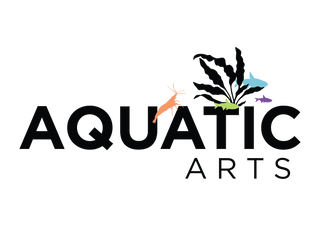Sakura Shrimp Care Guide

Overview
The Sakura Red Cherry Shrimp is a very high quality variant of the common Red Cherry Shrimp. Known worldwide for its hardiness, intense red color, and easy breeding, this is the most popular type of dwarf shrimp in the aquarium hobby. Because of their lower cost, toughness, and ease of care, these shrimp are perfectly suitable for beginners looking to keep dwarf shrimp.
These are freshwater shrimp and can live in almost any freshwater aquarium due to their extremely adaptable nature. They are very popular for planted tanks and community tanks, and many people use them in large aquariums for waste management and algae control. They breed very quickly, forming a colony that works as a very effective cleaning crew and enhances any aquarium with their beautiful color.
Species
Neocaridina davidi (formerly Neocaridina heteropoda)
Size
These shrimp grow to a maximum size of 2 inches long, although this will only be attained by the largest females. The most common maximum length is about 1.5 inches for females, and 1.25 inches for males.
Recommended Tank Parameters
- pH level range: 6.4 to 8.0, ideal range: 6.8 to 7.5
- Temperature range: 65° to 80° F
- Water type: kH 0-10; gH 4-14; TDS 80-200
- Notes from the owner:
- All dwarf shrimp prefer to live in tanks with live aquatic plants (such as willow moss, baby tears, green cabomba, etc). There are a few reasons for this:
- 1. Dwarf shrimp love the cover that plants provide them
- 2. They love to graze on the plants for algae
- 3. Plants help keep the water clean for the shrimp
- We have kept Sakura Red Cherry Shrimp in a wide array of water parameters with great success. Though they are extremely adaptable and will thrive in a pH of 6.4 to 8.0, we have found that the optimum pH is between 6.8 and 7.5. Water temperature can be anywhere from 68° to 80° (Fahrenheit), but the fastest breeding occurs at about 76° F. If you plan to breed the shrimp, you will NEED to have a sponge prefilter on your filter intake to prevent the shrimp from being sucked in.
- Also, nearly every species of fish will eat dwarf shrimp fry, so breeding is best accomplished in species-only tanks. They are very tolerant of hard water. We have kept them in water as hard as 20 gH/400 TDS, and still saw them breed incredibly fast.
- All dwarf shrimp prefer to live in tanks with live aquatic plants (such as willow moss, baby tears, green cabomba, etc). There are a few reasons for this:
Compatibility
Safe: Small, peaceful fish and invertebrates. Good choices are:
- Other dwarf shrimp
- Small, peaceful fish
- Asian Stone Catfish
- Bushynose Plecos
- Corydora Catfish
- Danios
- Guppies
- Hillstream Loaches
- Microrasboras
- Otocinclus (safe to keep with breeding shrimp as well)
- Ram Cichlids
- Tetras (small tetras only)
- Filter Shrimp
- Vampire Shrimp
- Singapore Flower Shrimp
- Snails (all types)
- Ramshorn Snails
- Mystery Snails
- Nerite Snails
- Sulawesi Snails (aka Rabbit Snails)
Unsafe: Any fish or invertebrate large and/or aggressive enough to eat a dwarf shrimp. Examples:
- Angelfish
- Barbs (the aggressive kinds)
- Bettas
- Glo Tetras
- Catfish (large)
- Cichlids
- Crayfish (most types)
- Discus
- Pacu
- Plecos (large)
- Goldfish
- Gourami
Feeding
Sakura Red Cherry Shrimp require very little food. When we say "very little," we mean that one fish flake the size of a dime every day is enough for 10 or more shrimp. Overfeeding is a common cause of death, so do not feed them more than they can eat in two hours. In established tanks where there is plenty of algae and biofilm, dwarf shrimp may not need extra food at all.
In addition to fish or shrimp flake foods and pellets, dwarf shrimp will also eat blanched vegetables (such as zucchini, carrots, and spinach), as well as algae wafers or pellets.
Warning! Avoid any food product, medication, or plant fertilizer that contains Copper of any form. Copper is toxic to invertebrates. Many commercial fish foods, medications, and plant fertilizers contain copper or more commonly copper sulfate. Always look at the ingredient list for any product going into the aquarium to ensure they are copper free.
Breeding
Sakura Red Cherry Shrimp are VERY easy to breed. In fact, you don't have to do anything but provide the shrimp with good conditions, cover your filter intake with a pre-filter (such as a sponge), and keep them in a tank without any fish (with the exception of Otocinclus catfish - they are fine to keep with breeding shrimp). Females will carry between 30 and 50 eggs at a time in a cluster beneath their tails, and the newborn shrimp hatch as miniature versions of the adults that are immediately able to fend for themselves. However, there must be adequate algae and/or biofilm in the tank for them to feed on. In tanks lacking algae or biofilm (usually newer tanks), shrimp can be fed by crushing algae flakes before dropping them in. Within 3 months, the newborn shrimp will be sexually mature and able to breed. When properly kept, 10 shrimp can turn into 1,000 within 6-8 months.
What to Expect from Us
We generally ship young adult shrimp that are already of breeding age.
All Aquatic Arts brand plants and animals come with a 100% live arrival guarantee, plus free email support directly from the owners! All that we require is that you send us a clear, digital picture of the unopened bag of DOAs, and we will replace them free of charge.

